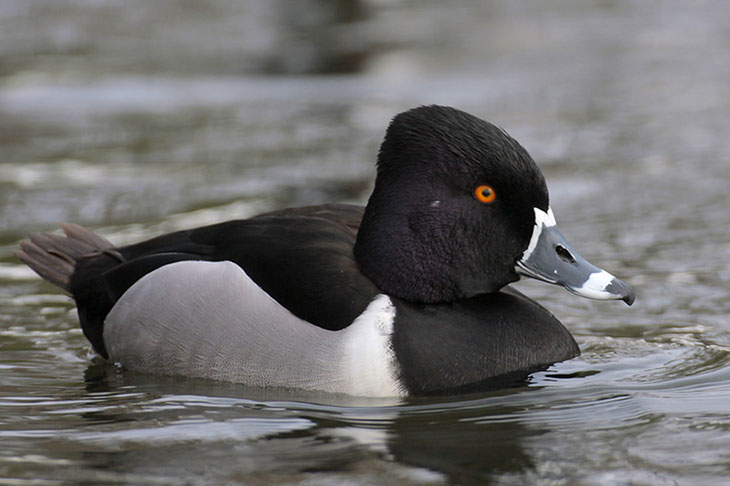Ring-necked Ducks are widespread across North America, particularly in migration and winter, and they winter in large flocks along the Gulf Coast. Ring-necked Ducks are well known for their love od ponds and wooded lakes.
The breeding and wintering ranges of the Ring-necked Duck are well separated, except in western North America. Migration takes place at night in small flocks. Weather has less effect on migration timing than might be expected, for the Ring-necked Duck’s internal clock seems to be the primary signal for migration.
On this page
Length: 17 inches, Wing span: 25 inches
There are records of several other species of ducks laying eggs in the nest of Ring-necked Ducks. Female Ring-necked Ducks often return to the same area to nest in subsequent years. The longest known living wild Ring-necked Duck was about 20 years old.
Description of the Ring-necked Duck
BREEDING MALE
The Ring-necked Duck is a diving duck slightly smaller than a Redhead, with a bluish-gray bill, a white subterminal band, and a black tip. This species is named for the dark reddish collar of the males, though it is seldom visible in the field.
Males have gray flanks with a vertical white patch at the front, and black upperparts, breast, neck, and head.
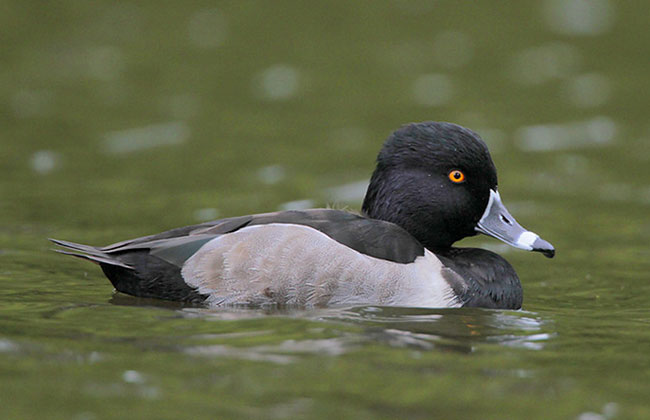
Photograph © Greg Lavaty
Female
Females have brownish flanks, darker upperparts, a brown cap, and gray cheeks.
Seasonal change in appearance
Males in nonbreeding plumage are similar but browner.
Juvenile
The immature Ring-necked Duck is similar to the adult female.
Habitat
Ring-necked Ducks inhabit lakes, ponds, rivers, and marshes.
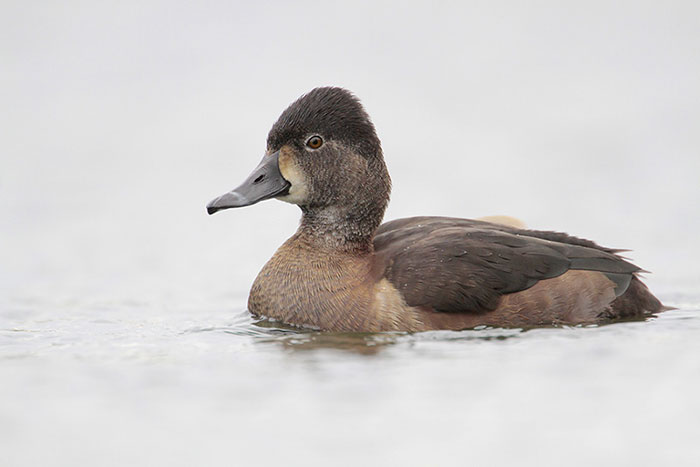
Female. Photograph © Greg Lavaty
Diet
Ring-necked Ducks primarily eat roots, leaves, seeds and other plant material, but will also eat insects and mollusks.
Behavior
The Ring-necked Duck dives in shallow water to forage, or gleans food from the water’s surface.
Related: What do ducks symbolize?
Range
Ring-necked Ducks occur throughout most of the U.S. and Canada, breeding in northern portions of the U.S. north to Alaska, and wintering across a broad swath of the central and southern U.S., as well as the Pacific and Atlantic Coasts. The population is generally stable.
Fun Facts
The Ring-necked Duck was named, as were most of North America’s birds, after examining specimens that had been shot, making such features as the collar (or “ring”) of the Ring-necked Duck easier to see than is possible with binoculars from a distance as most birds are now seen today.
Unlike most diving ducks which require a running start to leave the water, Ring-necked Ducks can take flight directly from the surface.
Vocalizations
Female Ring-necked Ducks give a growl, while males are generally silent.
Ring-necked Ducks Pictures
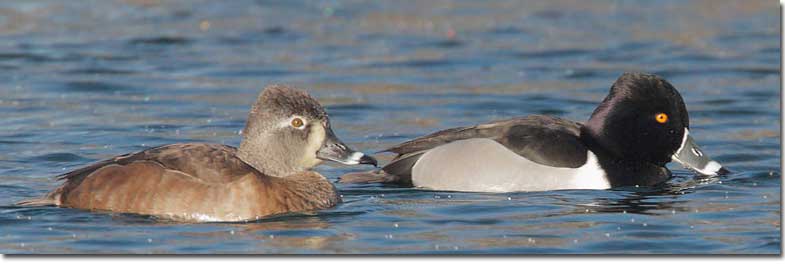
Female (left) and male Ring-necked Duck. Photograph © Tom Grey.
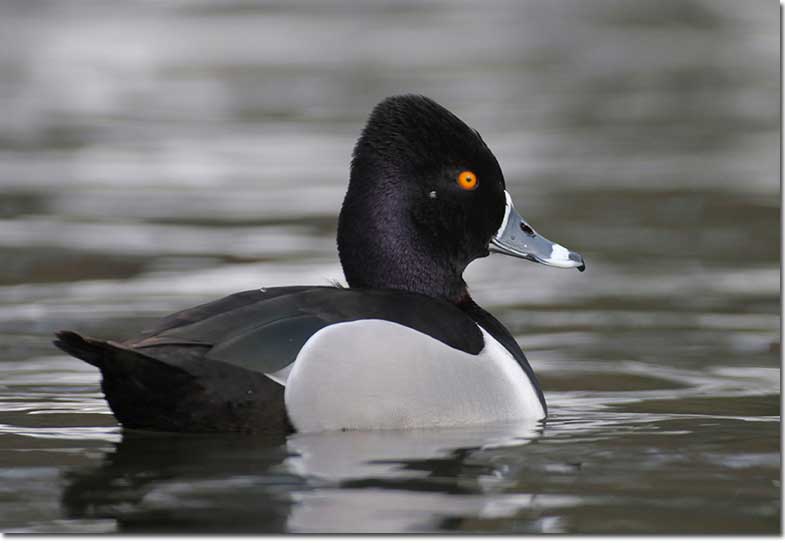
Males are distinctive with smooth, gray sides, dark back and a dark head with a purple sheen. Thin white line at base of the bill. Blue-gray bill has white and black tip. There is a tall peak to the head. Photograph © Greg Lavaty.
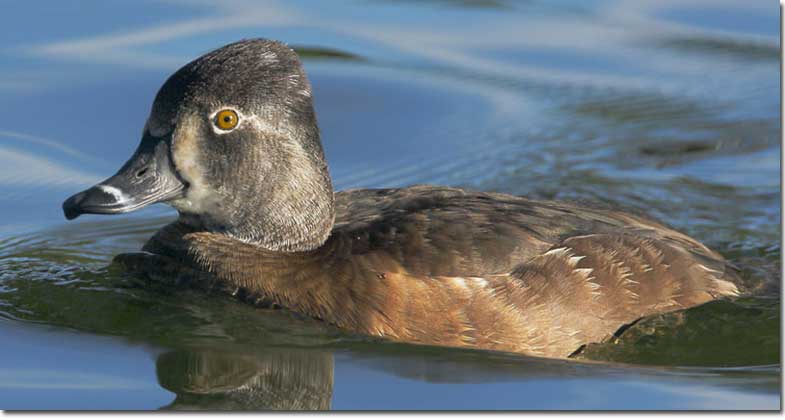
Females have a distinct white eye ring and gray face. The white at the base of the bill is similar to a scaup but generally grayer and less extensive. May show a dropping thin line from the back of the eye. Flanks and back rust gray. Head is gray. Juveniles resemble females. Photograph © Tom Grey.
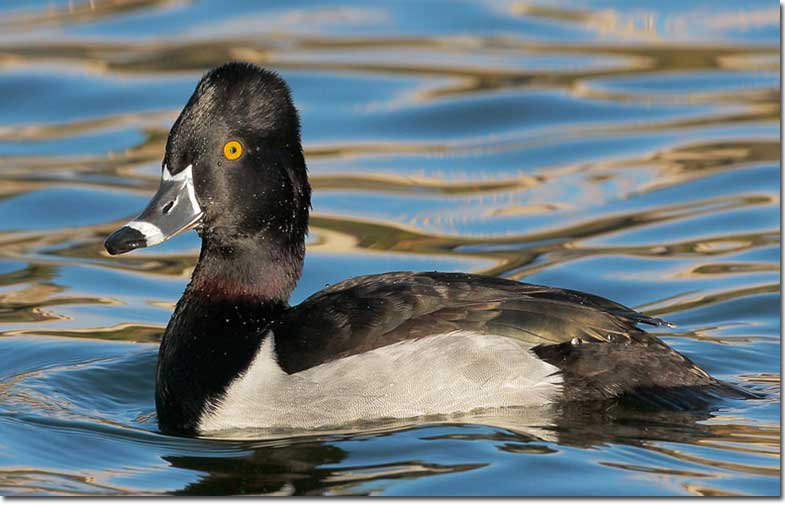
The Ring-necked Duck is named for the brown ring on the neck. Note the white point extending up from the side, near the base of the neck. The brown band on the neck is hard to see in the field. Photograph © Tom Grey.
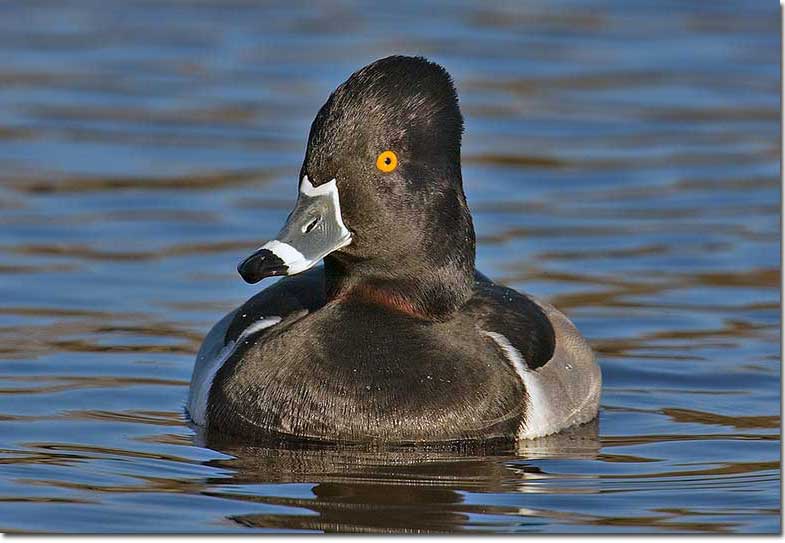
Distinctive white bands on the tip of the bill and the base of the bill. Photograph © Alan Wilson.
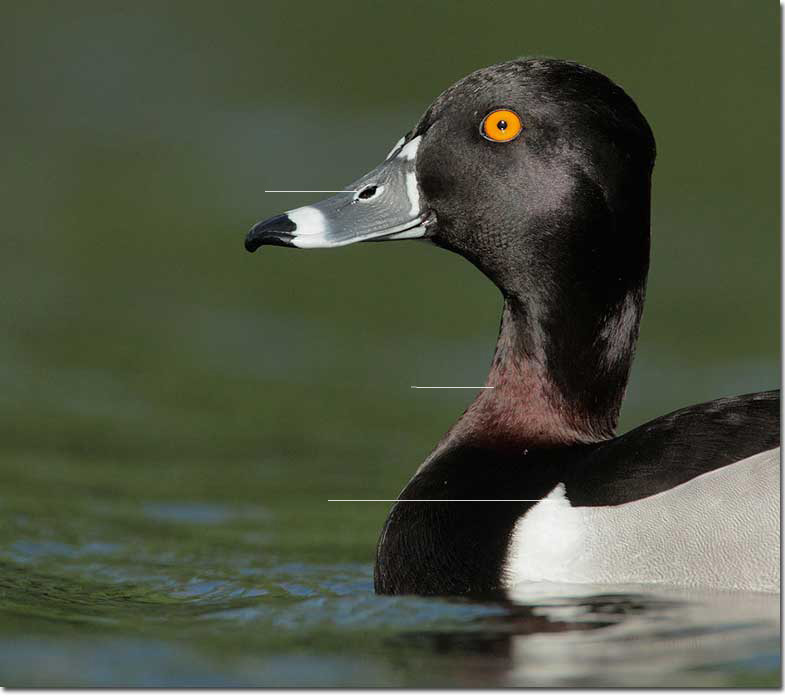
Close up of male. Nostril is outlined in white. Also note the brown ring on the neck (the source of its name) and white point near the base of the neck. Photograph © Tom Grey.
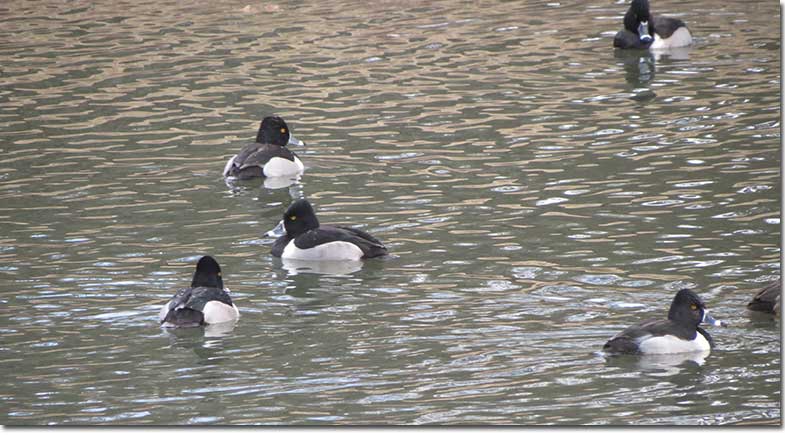
Males are easy to identify with their dark backs, white sides with a point near the neck and the white banded bill. Photograph © Sam Crowe.
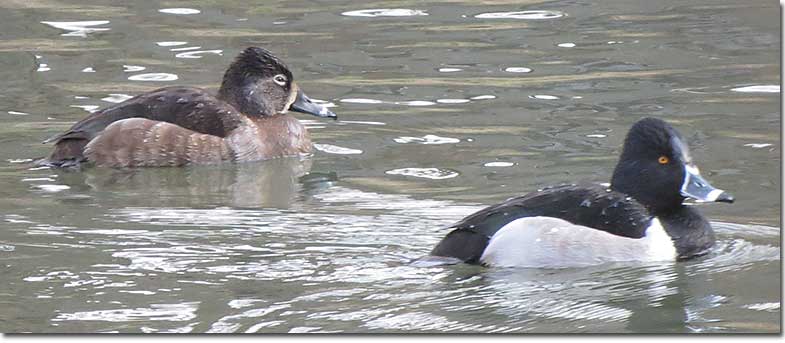
Female and male. Males in eclipse plumage have gray/rusty sides similar to female. Photograph © Sam Crowe.
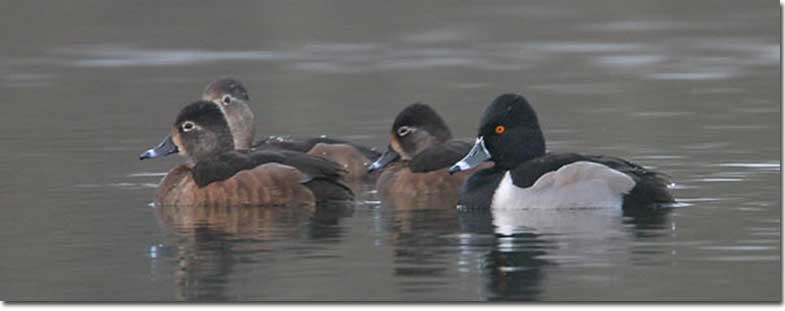
Females and male. Photograph © Greg Lavaty.
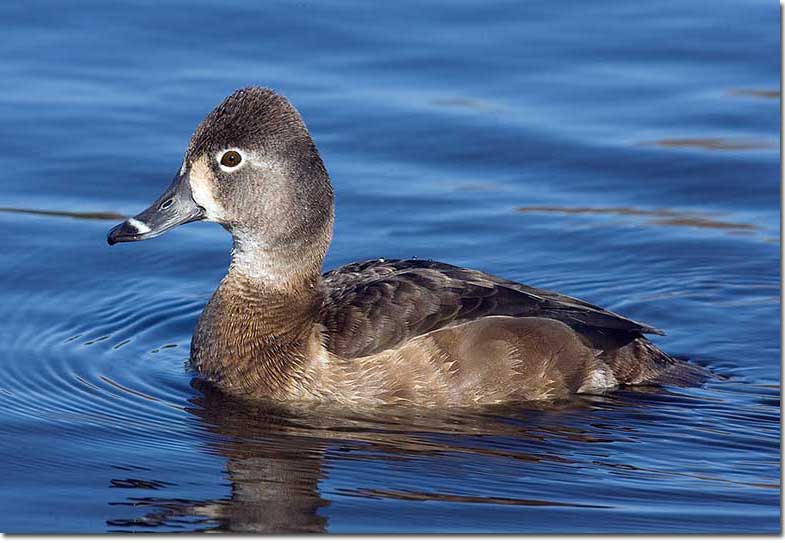
Females similar to female Redhead and scaup. Note the high point to the head and strong eye ring. Photograph © Alan Wilson.
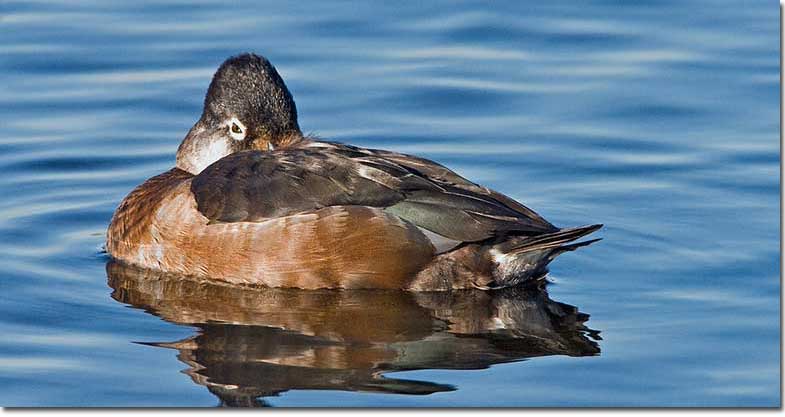
Resting Ring-neck Ducks, above and below. Note the white eye rings, which may not be visible at a distance. Photograph © Alan Wilson.
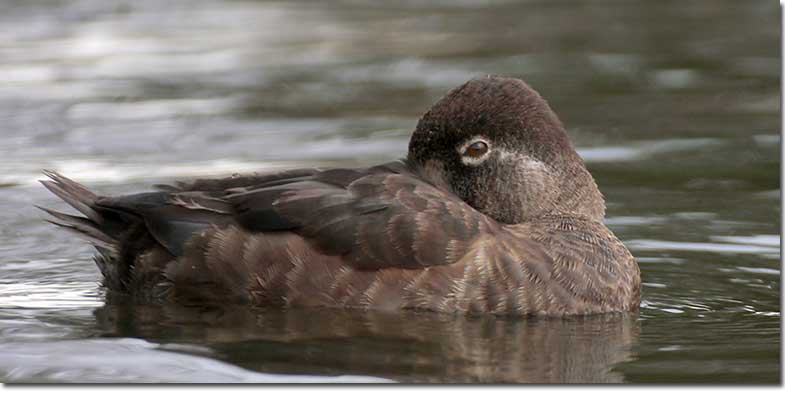
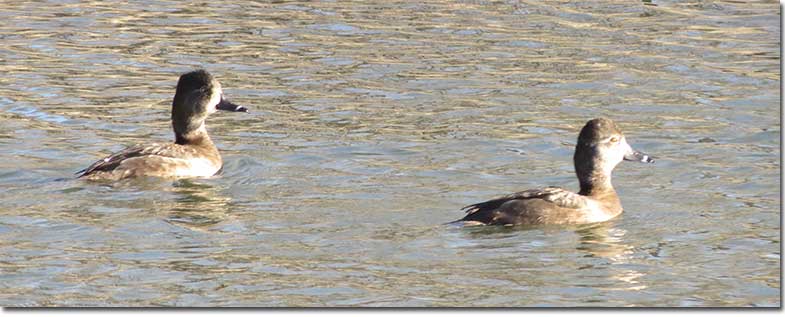
The broad white band near the tip of the bill and the strongly peaked head help identify these two ducks even in poor lighting conditions. Photograph © Sam Crowe.
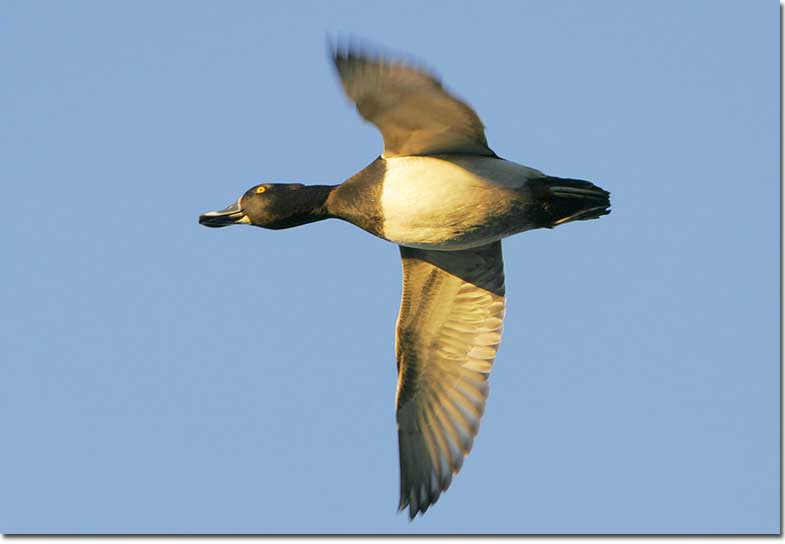
From this angle it is difficult to separate the Ring-necked Duck from scaup. Wing linings generally whiter in scaup. Photograph © Greg Lavaty.
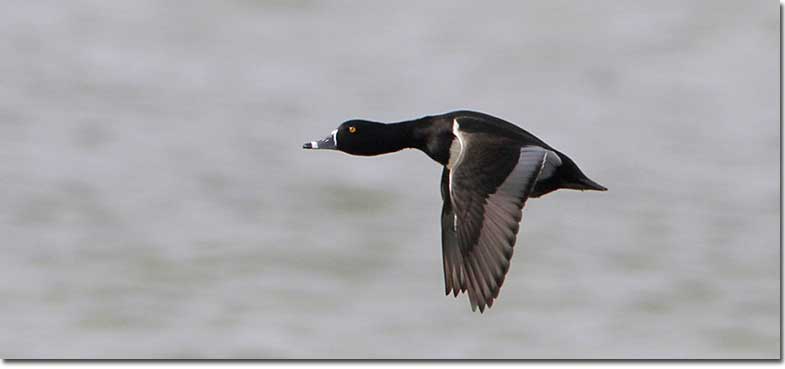
Note the bill color and thin white line on the face. Tow-tone pattern to the top of the wings. Photograph © Greg Lavaty.
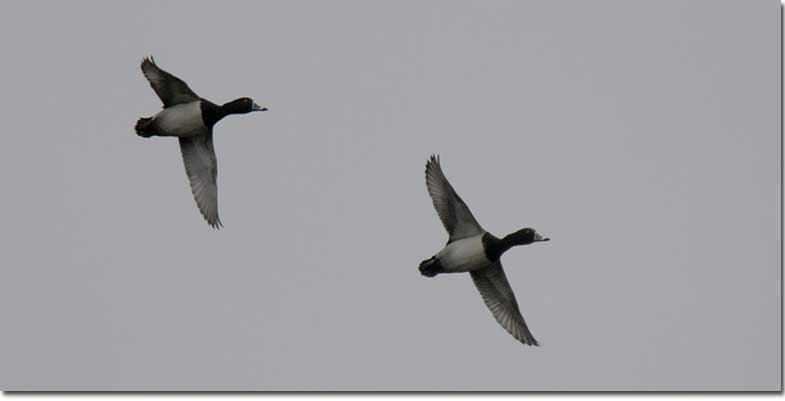
Males in flight. Narrow wings long and pointed. Photograph © Greg Lavaty
The following 3 images show Ring-necked Ducks in flight. The amount of white on the face might lead to the conclusion that they are female scaup. Note the eye ring and the white band on the bill, near, but not at the tip of the bill.
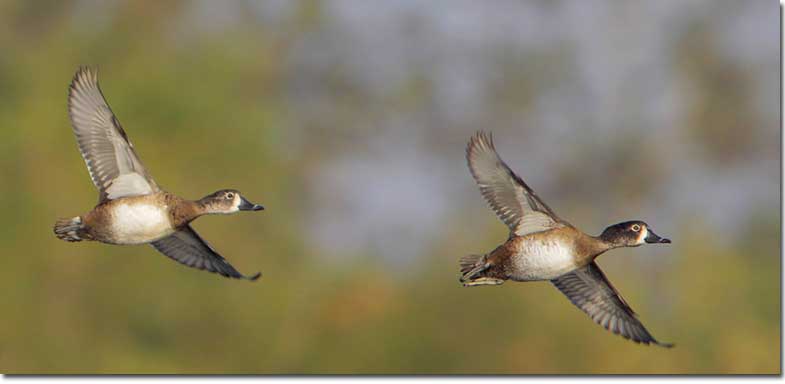
Photograph © Greg Lavaty.
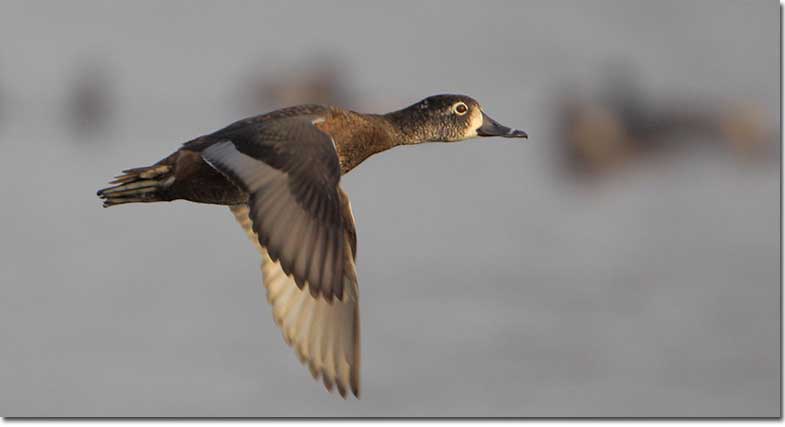
Photograph © Greg Lavaty.
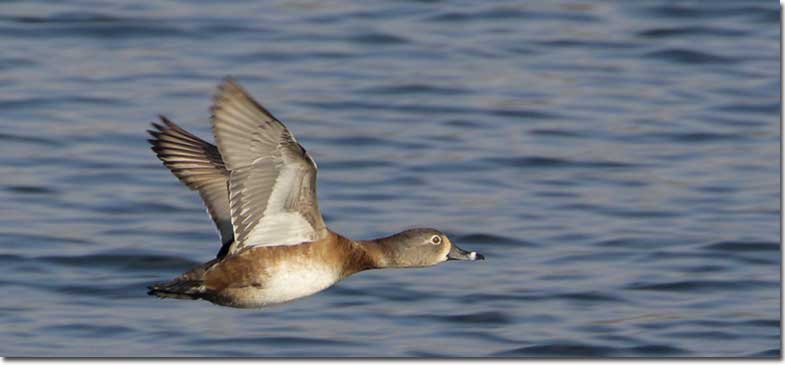
Photograph © Greg Lavaty.
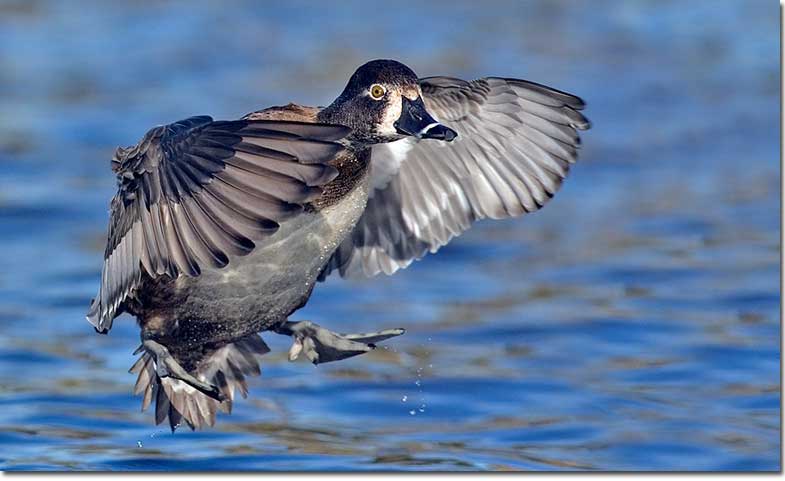
A good view of female with a large amount of white at the base of the bill. The amount of white on the face is variable and poorly illustrated in many printed field guides. The head looks awfully dark for a female but the white eye ring and hint of the white line extending behind the eye are good indications that it is a female. Photograph © Alan Wilson.
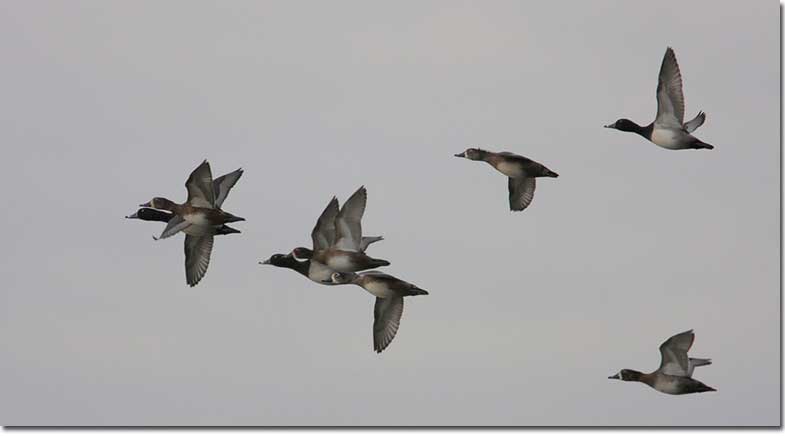
Ring-necked Ducks in flight. Can be difficult to tell these birds are not scaup. At a distance, female Redheads, scaup and Ring-necked ducks can look very similar in flight. Under-wing linings and speculum whiter in scaup but can be hard to detect. Photograph © Greg Lavaty.
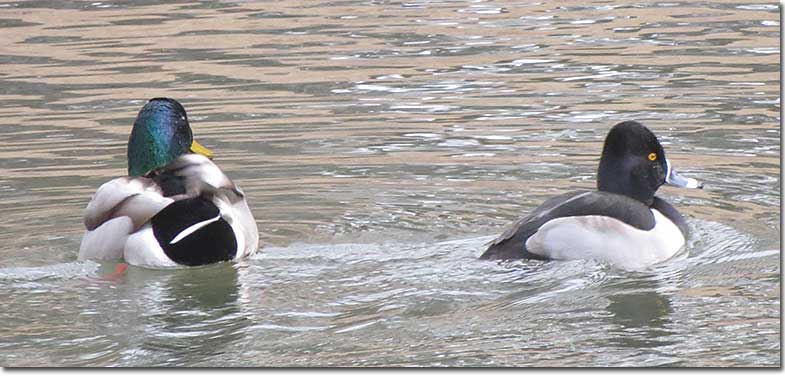
Mallard, left and Ring-necked Duck on the right.
Similar Species
- Male scaup have paler upperparts, and female scaup have dark brown heads.
Nesting
The Ring-necked Duck’s nest is a bowl of grasses and weeds lined with down, and placed on a hummock or on floating vegetation
Number: Usually lay 8-10 eggs.
Color: Olive or buff.
Incubation and fledging:
The young hatch at about 25-29 days and leave the nest soon after hatching, but may return to the nest at night, and cannot fly for about 7-8 weeks

